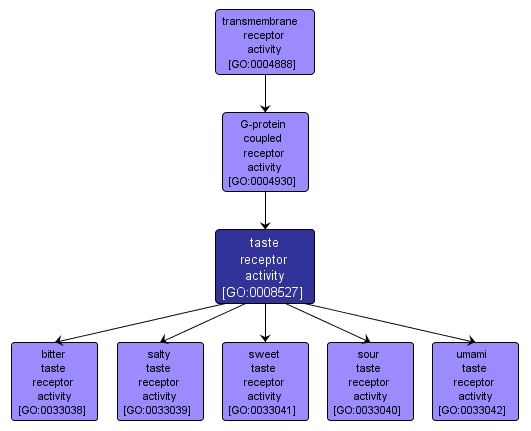GO TERM SUMMARY
|
| Name: |
taste receptor activity |
| Acc: |
GO:0008527 |
| Aspect: |
Molecular Function |
| Desc: |
Combining with soluble compounds to initiate a change in cell activity. These receptors are responsible for the sense of taste. |
| Synonyms:
|
|

|
INTERACTIVE GO GRAPH
|














